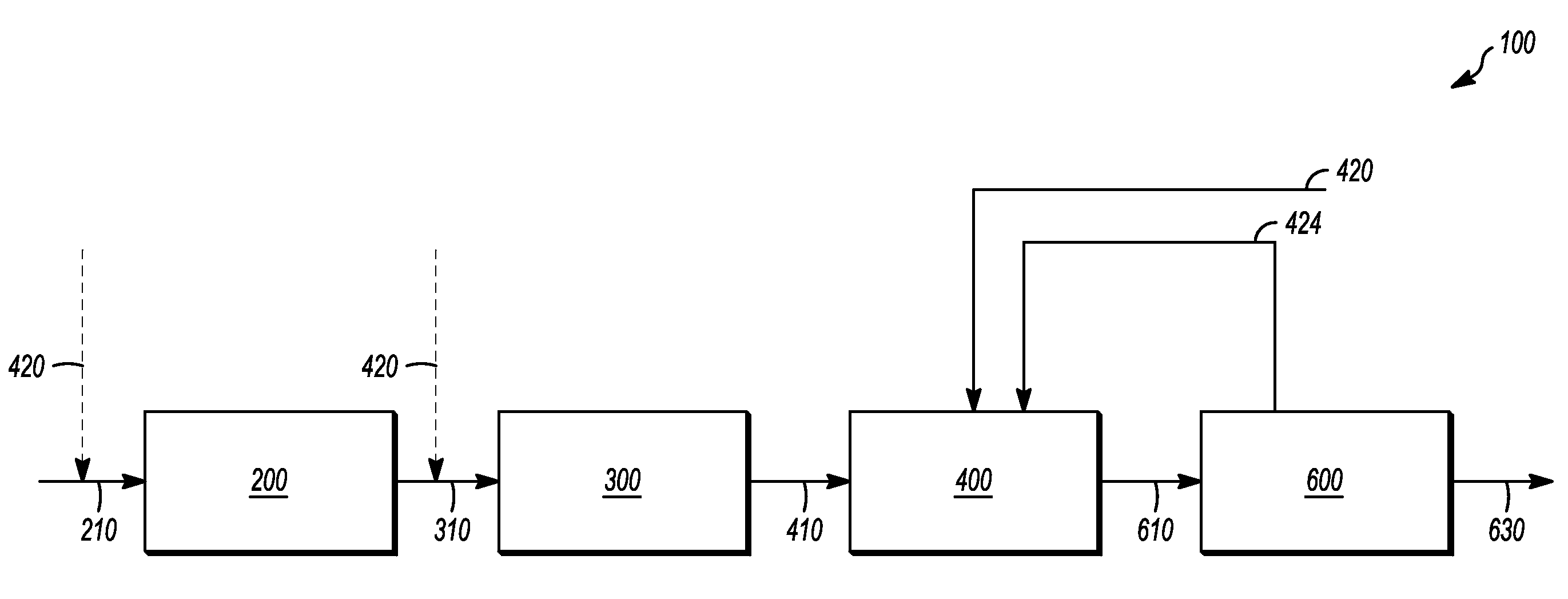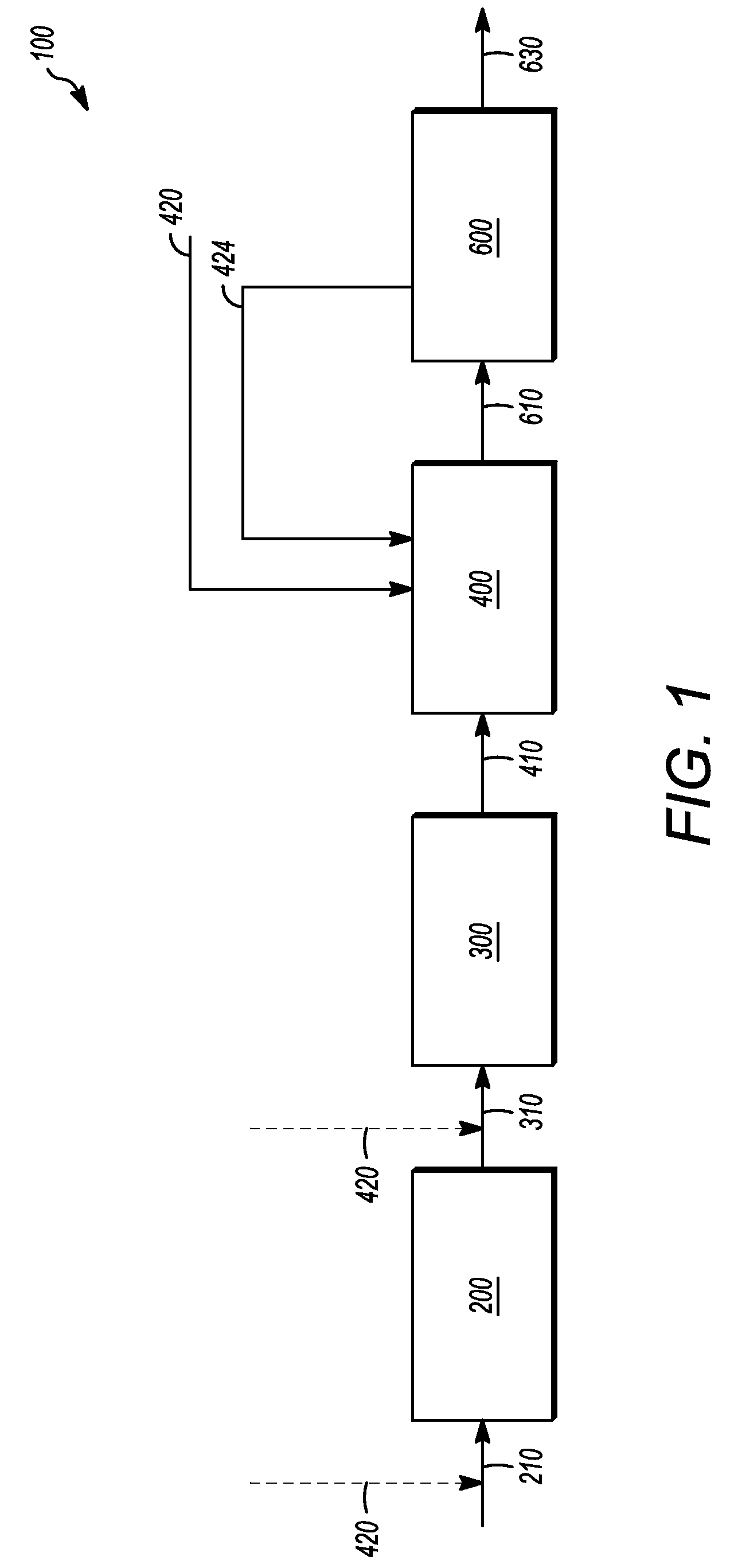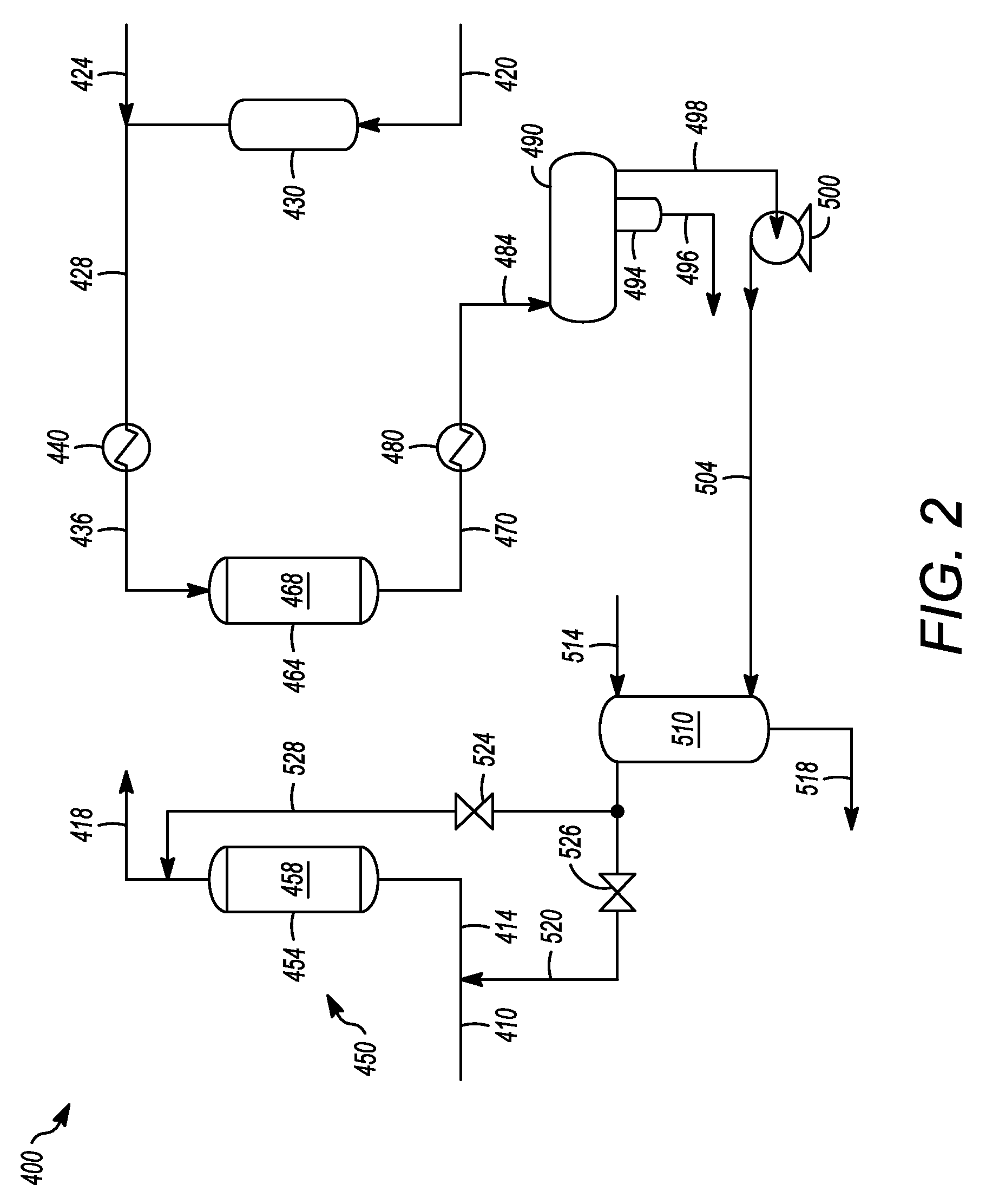Process or system for desorbing an adsorbent bed
a technology of adsorbent bed and a process, which is applied in the direction of physical/chemical process catalysts, separation processes, other chemical processes, etc., can solve the problems of increased capital and operating costs, etc., and achieves the effect of low cost and sufficient availability
- Summary
- Abstract
- Description
- Claims
- Application Information
AI Technical Summary
Benefits of technology
Problems solved by technology
Method used
Image
Examples
Embodiment Construction
[0018]Referring to FIG. 1, an exemplary chemical manufacturing unit or system 100 can include an extraction zone 200, a selective hydrogenation zone 300, a removal or an adsorption zone 400 (may hereinafter be simply referred to as “a removal zone 400”), and an alkylation zone 600. Typically, a feed stream 210 can be provided to the extraction zone 200. The extraction zone 200, in turn, provides a feed stream 310 to the selective hydrogenation zone 300. Afterwards, the selective hydrogenation zone 300 can provide a feed stream 410 to the removal or adsorption zone 400. A make-up isoparaffin stream 420 that can be utilized in the alkylation zone 600 may be provided directly to a dryer in the adsorption zone 400, as hereinafter described. The alternative locations for the make-up isoparaffin stream 420 as depicted by the dashed lines in FIG. 1 will be discussed hereinafter. Next, the removal or adsorption zone 400 can provide a hydrocarbon stream or a feed stream 610 to the alkylation...
PUM
| Property | Measurement | Unit |
|---|---|---|
| temperature | aaaaa | aaaaa |
| temperature | aaaaa | aaaaa |
| pressure | aaaaa | aaaaa |
Abstract
Description
Claims
Application Information
 Login to View More
Login to View More - R&D
- Intellectual Property
- Life Sciences
- Materials
- Tech Scout
- Unparalleled Data Quality
- Higher Quality Content
- 60% Fewer Hallucinations
Browse by: Latest US Patents, China's latest patents, Technical Efficacy Thesaurus, Application Domain, Technology Topic, Popular Technical Reports.
© 2025 PatSnap. All rights reserved.Legal|Privacy policy|Modern Slavery Act Transparency Statement|Sitemap|About US| Contact US: help@patsnap.com



